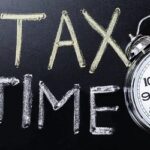According to the Finance Act of 2017, individuals or Hindu Undivided Family (HUF) are required to deduct TDS (Tax Deducted at Source) on rent under section 194-IB, if the monthly rent paid to a resident exceeds ₹50,000. However, this does not apply to individuals or HUFs whose business or professional income exceeds the monetary limits set forth in section 44AB of the Income Tax Act, 1961 during the preceding financial year. Effective June 1, 2017, the tenant, lessee, or payer of the property must deduct tax at a rate of 5% or 3.75% (depending on the date of payment or credit to the landlord) at the time of paying rent to the landlord, lessor, or payee. The tax deducted must then be deposited into the government account through an authorized bank branch.
Important Reminders for Property Tenants:
- Individuals or Hindu Undivided Families (HUFs) who pay monthly rent to a resident in excess of ₹50,000, except for those who are liable for audit under clauses a and b of section 44AB, are obligated to deduct TDS under section 194-IB.
- Tax must be deducted at a rate of 5% or 3.75% from the rent payment made to the landlord, depending on the date of payment or credit.
- It is mandatory to collect the landlord’s Permanent Account Number (PAN) and verify it with the original PAN card.
- Both the tenant’s and landlord’s PAN must be furnished in the online form for providing information on rent.
- Care should be taken to avoid errors in quoting PAN or other details in the online form. In case of errors, you must contact the Income Tax Department for rectification.
- Within 15 days from the due date of furnishing the challan-cum-statement in Form 26QC, download and furnish the TDS certificate in Form 16C from TRACES and issue it to the landlord, lessor, or payee.
- If the landlord, lessor, or payee is a non-resident, TDS liability arises under section 195 of the Income Tax Act, 1961.
Key Considerations for Property Owners:
- Supply your PAN number to the tenant for reporting TDS information to the Income Tax Department.
- Ensure that taxes deducted by the tenant are reflected in your Form 26AS Annual Tax Statement.
- Require the tenant to provide a Form 16C that has been obtained exclusively from the TRACES website.
FAQs on TDS on Rent of Property
Q: What is TDS on Rent?
A: TDS on Rent is a tax deduction at source under the Finance Act, 2017. Tenants who pay monthly rent exceeding ₹50,000 are required to deduct 5% or 3.75% (depending on the date of payment/credit) of the rent payable to a resident landlord.
Q: Who is responsible for deducting TDS on Rent?
A: Tenants who are individuals or HUFs (not subject to audit under section 44AB) are responsible for deducting TDS and depositing it in the government treasury.
Q: Do I need a TAN as a tenant to report TDS on rent?
A: Tenants are not required to have a Tax Deduction Account Number (TAN). They only need to quote their own PAN and the landlord’s PAN.
Q: How can I use this facility to pay TDS on rent?
A: Tenants (deductors of tax) can furnish information about the transaction online on the TIN website (www.tin-nsdl.com). After successfully providing the details, the deductor can either make the payment online immediately or make the payment subsequently through e-tax payment (net-banking account) or by visiting an authorized bank branch. If encountering any errors on the website, contact the TIN Call Center at 020 – 27218080 or write to them with the subject “Online Payment of Direct Tax_ TDS on rent of property”.
Q: What is Form 26QC?
A: Form 26QC is the challan-cum-statement for reporting transactions liable to TDS on rent under section 194-IB of the Income-tax Act, 1961. It is an online form available on the TIN website.
Q: What is the due date for paying TDS on rent?
A: The due date for paying TDS on rent is thirty days from the end of the month in which the deduction was made. For example, if rent was paid in December, the corresponding TDS should be deposited by January 30th.
Q: What is the frequency of filing Form 26QC?
A: The Taxpayer/Tenant is required to furnish a challan-cum-statement in Form 26QC in the following circumstances:
- At the end of the Financial Year (FY) or in the month when the premise is vacated/the agreement is terminated.
- If the agreement period spans more than one FY and rent has been paid/credited during the year, the taxpayer must mandatorily file the form at the end of each Financial Year.
- If the agreement period falls in the same FY, the taxpayer should file the form in the month when the premise is vacated/the agreement is terminated.
Q: I lost the Acknowledgment Number after filing Form 26QC and making payment online. Where can I find it?
A: The Acknowledgment Number for the Form 26QC can be found in the Form 26AS (Annual Tax Statement) of the Deductor (i.e., Tenant/Payer of property). This can be viewed on the TRACES website (www.tdscpc.gov.in) or by clicking the ‘View Acknowledgment’ option on the TIN website. Enter the PAN of the Tenant and Landlord, Total Payment, and Financial Year (as mentioned at the time of filing the Form 26QC) to retrieve the Acknowledgment Number.
Q: I forgot to print Form 26QC after filing it online. How can I print it?
A: The Deductor can access the link “E-tax on subsequent date” on the TIN website and enter the details from the acknowledgment slip. They will then have the option to print the Form 26QC.
Q: What is Form 16C?
A: Form 16C is the TDS certificate issued by the Deductor (Tenant of property) to the Deductee (Landlord of property) for the tax deducted and deposited as TDS on rent under Section 194-IB of the Income-tax Act, 1961.
Q: Where can I get Form 16C?
A: Form 16C can be downloaded from the website of the Centralized Processing Cell of TDS (CPC-TDS), www.tdscpc.gov.in.
Q: Can I make cash or cheque payments for TDS at banks?
Yes, the Tenant may approach any authorized bank branch to make an e-payment.
Q: If I file Form 26QC before TDS payment and select the option for e-payment at a later date, how will the payment be matched with the 26QC?
A: The e-payment of taxes at a later date will be linked to the Form 26QC based on the Acknowledgment Number generated at the time of filing the Form 26QC.
Q: How are joint transactions (with more than one tenant/landlord) filed in Form 26QC?
A: Online challan-cum-statement in Form 26QC is to be filed by each tenant for the unique tenant-landlord combination for their respective share. For example, if there is one tenant and two landlords, two forms must be filed. And if there are two tenants and two landlords, four forms must be filed for the respective rent shares.
Q: How do I make tax payments for fees in Form 26QC?
A: The provision to enter the tax amount (including basic tax, interest, and fee) in Form 26QC is available on the TIN website and the bank’s site.
Q: What is the Fee for Non-Filing of Form 26QC and When Does it Apply?
A: The fee for failing to file Form 26QC (challan-cum-statement) electronically within 30 days from the end of the month in which the tax deduction was made will result in a fee for default. This fee is specified in section 234E of the Income-tax Act, 1961 and Rule 31A (4B) of the Income-tax Rules, 1962. The fee for default will be levied on the deductor (tenant/lessee/payer) and will be at the rate of ₹200 for each day.
Q: How Can I Make a Payment for TDS on Rent of Property if an Error Occurs After Generating Form 26QC Acknowledgment Number?
A: If an unexpected error occurs after generating the Form 26QC Acknowledgment number, do not fill out the form again. Instead, you can access the E-tax payment link under Form 26QC on the TIN website. Enter the details of the same Form 26QC and Acknowledgment number that were previously generated. You will then be given the option to submit to the bank for e-payment. You can choose the mode of payment and bank through which you want to make the payment. Finally, you will be taken to the net-banking/debit card login screen where you can make the payment online.
Q: What Should I Do If I Am Unable to Make a Payment for TDS on Rent of Property After Generating Form 26QC Acknowledgment Number?
A: If an unexpected error occurs after generating the Form 26QC Acknowledgment number, do not fill out the form again. Instead, you can access the E-tax payment link under Form 26QC on the TIN website. Enter the details of the same Form 26QC and Acknowledgment number that were previously generated. You will then be given the option to submit to the bank for e-payment. You can choose the mode of payment and bank through which you want to make the payment. Finally, you will be taken to the net-banking/debit card login screen where you can make the payment online.
Q: What is the Current TDS Rate on Rent of Property?
A: According to the Income Tax Department, the current TDS rates on rent of property are as follows:
For monthly rent exceeding ₹50,000:
- Applicable TDS rate if the date of payment/credit to the landlord is before May 14, 2020: 5%
- Applicable TDS rate if the date of payment/credit to the landlord is on or after May 14, 2020: 3.75%







